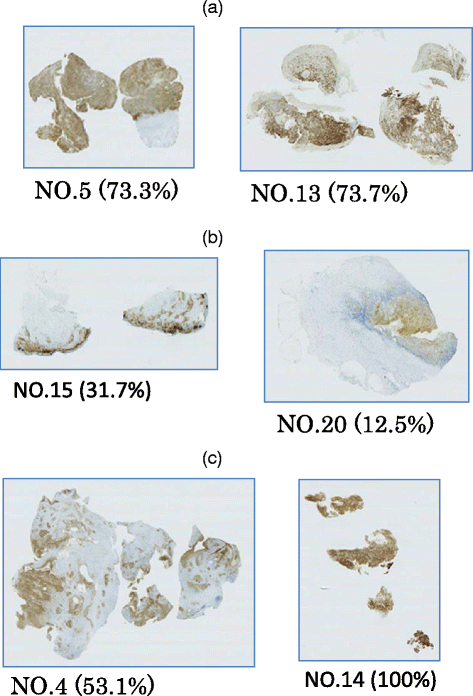BRAF V600 mutations in Langerhans cell histiocytosis with a simple and unique assay
- PMID: 27094161
- PMCID: PMC4837618
- DOI: 10.1186/s13000-016-0489-z
BRAF V600 mutations in Langerhans cell histiocytosis with a simple and unique assay
Abstract
Background: BRAF (V-raf murine sarcoma viral oncogene homolog B1) is a serine-threonine protein kinase involved in cell survival, proliferation, and differentiation. The most common missense mutation of BRAF (mainly V600E) contributes to the incidence of various cancers, including Langerhans cell histiocytosis (LCH). BRAF inhibitors molecularly targeting the V600E mutation have been developed to counteract the effect of the mutation. To ensure the administration of effective pharmacotherapy, it is therefore imperative to develop an effective assay to screen LCH patients for the V600E mutation. However, tumor tissues of LCH typically contain many inflammatory cells which make a correct judgement of the mutation status difficult in the DNA sequence analysis.
Results: In this study, we present a new, highly sensitive analyzing method combining PCR, restriction enzyme digestion, and a sequencing assay using DNA extracted from formalin-fixed paraffin-embedded (FFPE) tissue specimens. TspRI is a restriction enzyme that cleaves the sequence encompassing the wild-type BRAF codon 600 into two fragments, which cannot be used as a template for subsequent BRAF PCR amplification. We therefore evaluated the sensitivity of BRAF V600 mutation detection by amplifying the primary PCR product digested with TspRI and sequencing the secondary PCR products. The V600E mutation was detected in FFPE tissue samples from 32 LCH patients; our assay was able to identify mutations in four samples that gave inconclusive results, and ten that were negative, according to standard PCR and sequencing.
Conclusions: We presented a new and highly sensitive method to detect BRAF V600 mutations. This screening method is expected to play an important role to select the most effective therapies.
Keywords: Formalin-fixed paraffin-embedded (FFPE); Langerhans cell histiiocytosis (LCH); TspRI; V-raf murine sarcoma viral oncogene homolog B1 (BRAF).
Figures




References
Publication types
MeSH terms
Substances
LinkOut - more resources
Full Text Sources
Other Literature Sources
Research Materials
Miscellaneous

